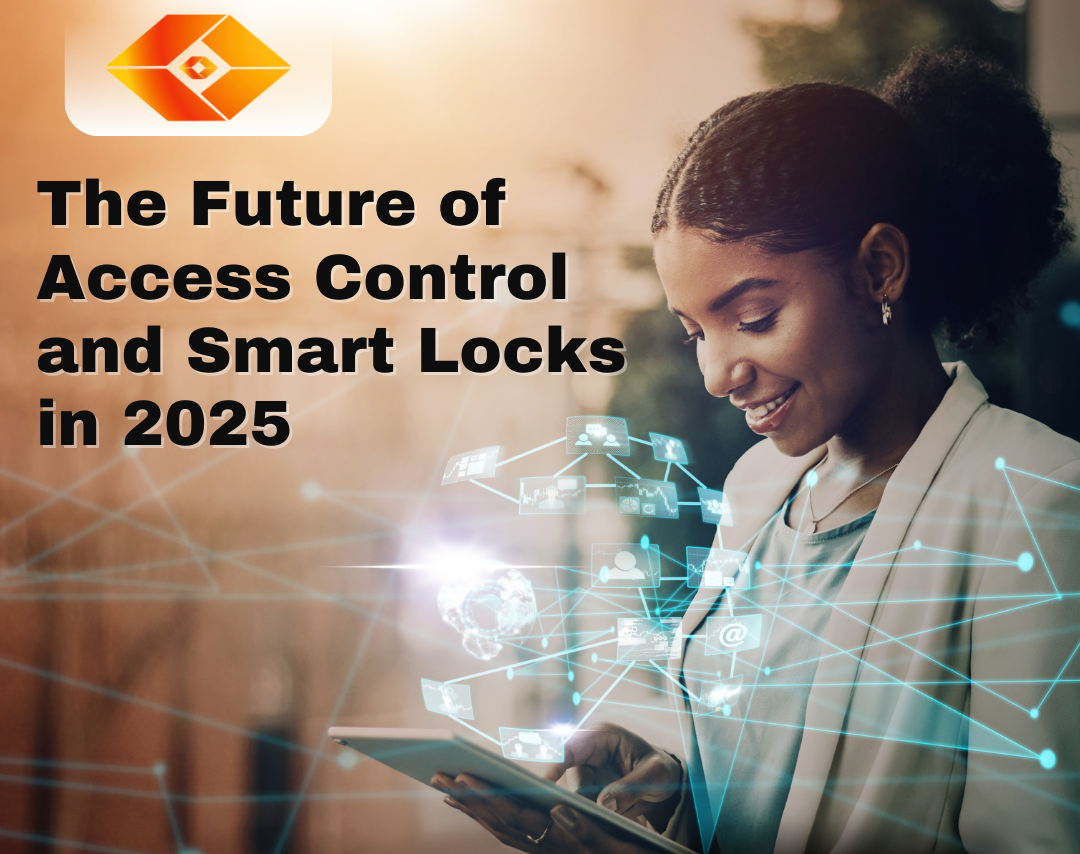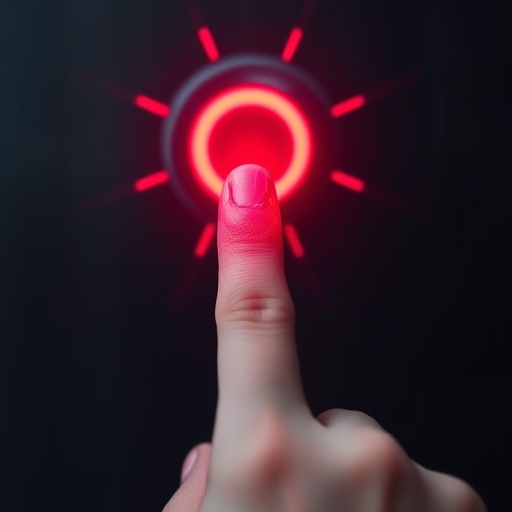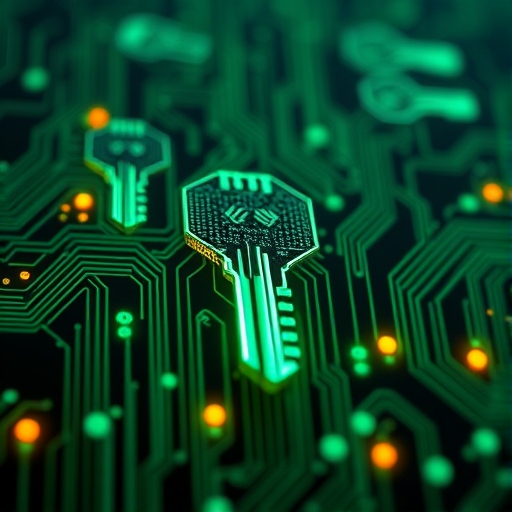
The Future of Access Control and Smart Locks in 2025: What’s Next for Security?
As we look toward the future, the landscape of access control and smart locks is evolving at an unprecedented pace. With rapid advancements in technology, the way we secure our homes, offices, and other spaces is becoming more seamless, intuitive, and secure. By 2025, access control systems will be far more integrated, intelligent, and responsive than ever before. From AI-driven biometrics to fully autonomous access management, the next generation of smart locks and security systems will redefine how we think about convenience, safety, and privacy.
Here’s a closer look at the key trends and innovations expected to shape access control and smart locks in 2025.
1. AI and Machine Learning for Predictive Security
By 2025, AI and machine learning will become central to access control systems, ushering in a new era of predictive security. Current smart locks are already capable of sending alerts when doors are unlocked or accessed, but by 2025, AI will elevate this functionality. Predictive security will enable smart locks and access systems to learn from past patterns and detect anomalies or potential security threats before they happen.
For example, imagine a system that can detect unusual access patterns—like multiple failed attempts to open a door at odd hours—and automatically initiate countermeasures such as temporarily locking the door or alerting security personnel. AI-powered systems will also be able to adapt to users’ daily routines, offering customized access experiences. For instance, if a user typically locks the door at 10 p.m., the system might prompt them to lock up automatically if they forget, or even do it for them.
2. Biometric Authentication Beyond Fingerprints 
Biometrics will continue to evolve in the coming years, expanding far beyond the simple fingerprint scanner. While facial recognition and retina scans are already in use, by 2025, we can expect even more advanced and diverse biometric authentication methods to gain traction.
Voice recognition, palm prints, and vein-pattern recognition will become more common, providing a level of security that’s both more reliable and harder to spoof. Smart locks may also incorporate multi-modal biometrics, where two or more types of biometric data are required to authenticate a user, further enhancing security and preventing unauthorized access.
Moreover, the combination of biometrics and AI will allow for a deeper understanding of who is accessing a space and under what circumstances. For example, AI could analyze the manner in which a person unlocks a door (how they place their hand, their walking pattern, voice inflection) to assess whether access is legitimate.
3. Voice-Activated Smart Locks: Control Through Conversation
By 2025, voice assistants will be ubiquitous in both residential and commercial spaces, and their integration with smart locks will reach new levels. Homeowners and businesses will increasingly rely on voice-activated smart locks to manage access to properties. It will be as simple as saying, “Hey Siri, unlock the front door” or “Alexa, lock the office door.”
What’s more, voice-activated access control systems will be more sophisticated, incorporating multi-factor authentication to ensure security. For example, a system might require both a voice command and a unique facial recognition scan before granting access, making voice recognition far more secure than it is today.
These systems will also be deeply integrated with other smart home technologies, such as lights, thermostats, and cameras, allowing users to control everything with a single voice command. Imagine saying, “Alexa, I’m home,” and having your door unlock, lights turn on, and the thermostat adjust automatically.
4. Blockchain for Decentralized Access Management
In the coming years, blockchain technology will increasingly be used to enhance the security and transparency of access control systems. While blockchain is most often associated with cryptocurrencies, its potential in access control is profound. Blockchain allows for decentralized and immutable data management, which means access logs and permissions are stored on a distributed ledger that can’t be tampered with.
By 2025, blockchain could be used to store access credentials in a way that makes them far more secure and resistant to hacking. For example, a blockchain-based system could allow for the creation of digital keys that can’t be copied or forged. Each transaction (such as unlocking a door) would be logged and verified, offering a high level of transparency and security.
 This could have significant implications for industries like real estate, where landlords and property managers could use blockchain to issue secure, time-limited access to tenants, contractors, or guests without the need for physical keys or centralized control systems.
This could have significant implications for industries like real estate, where landlords and property managers could use blockchain to issue secure, time-limited access to tenants, contractors, or guests without the need for physical keys or centralized control systems.
5. Seamless Integration with IoT Devices and Automation
The smart home ecosystem is becoming more interconnected, and by 2025, access control systems will be even more integrated with IoT (Internet of Things) devices and home automation systems. Your smart lock will no longer just be a standalone device; it will communicate with other parts of your home to provide a seamless, automated experience.
Imagine arriving home from a trip, and your home automatically recognizes your presence through your smartphone and opens the door for you. Meanwhile, the thermostat adjusts to your preferred temperature, the lights turn on, and the coffee machine begins brewing. All of this will be possible through a combination of smart locks, IoT devices, and machine learning that learns your preferences and adjusts your environment accordingly.
Commercial buildings will also benefit from IoT-enabled access systems, where employees can move through a building with a single digital credential that works across doors, elevators, parking garages, and even office equipment. This level of integration will streamline access while enhancing security and reducing the potential for human error.
6. Sustainability and Eco-Friendly Smart Locks
As sustainability continues to be a focal point for both consumers and manufacturers, eco-friendly smart locks will become more prevalent by 2025. From energy-efficient designs to the use of recyclable and biodegradable materials, manufacturers will place greater emphasis on reducing the environmental impact of smart lock products.
For instance, we may see an increase in solar-powered smart locks, which are ideal for outdoor areas or remote locations where electrical wiring is not practical. These systems would draw power from the sun, making them both eco-friendly and cost-effective in the long term.
Additionally, longer-lasting, rechargeable batteries and energy-efficient sensors will help reduce waste and lower the carbon footprint of smart locks. Expect to see a trend toward greener solutions as both consumer demand and regulatory pressures push for more sustainable products.
7. Enhanced Cybersecurity Features and Protection Against Hacking
As cyber threats grow more sophisticated, the security of smart locks will continue to evolve. By 2025, we can expect multi-layered encryption and advanced anti-tampering measures to be standard features in access control systems. Hackers will continue to target vulnerable entry points, but smart locks will be fortified with technology that makes them harder to compromise.
Moreover, AI-powered cybersecurity will be able to detect and prevent hacking attempts in real-time. For example, if someone tries to hack into a lock’s Bluetooth connection, AI algorithms might recognize the anomaly and immediately shut down the connection to prevent unauthorized access.
8. Smart Locks for More Personalized Experiences
Looking further into the future, personalized access control systems will allow users to fine-tune their access preferences based on their specific needs. Whether it’s adjusting the settings based on the time of day, personal routines, or even the mood of the user, access control will become more adaptive to individual behaviors.
In the workplace, these systems could also integrate with employee scheduling tools, adjusting access based on shifts, project requirements, or team dynamics. Imagine a system that unlocks certain rooms only for employees who need them based on their work schedule or department.

The Next Generation of Smart Locks
As we look ahead to 2025, it’s clear that access control and smart locks will continue to evolve into highly integrated, intelligent systems that offer unprecedented levels of security, convenience, and personalization. With advancements in AI, biometrics, blockchain, IoT, and cybersecurity, the future of access control promises to make our lives more secure, efficient, and streamlined.
Whether you’re a homeowner looking for a more secure and convenient way to manage access, a multi-family residence, or a business owner seeking cutting-edge solutions for employee and visitor management, the next generation of smart locks will be ready to meet your needs—making 2025 a truly exciting year for security and technology.
